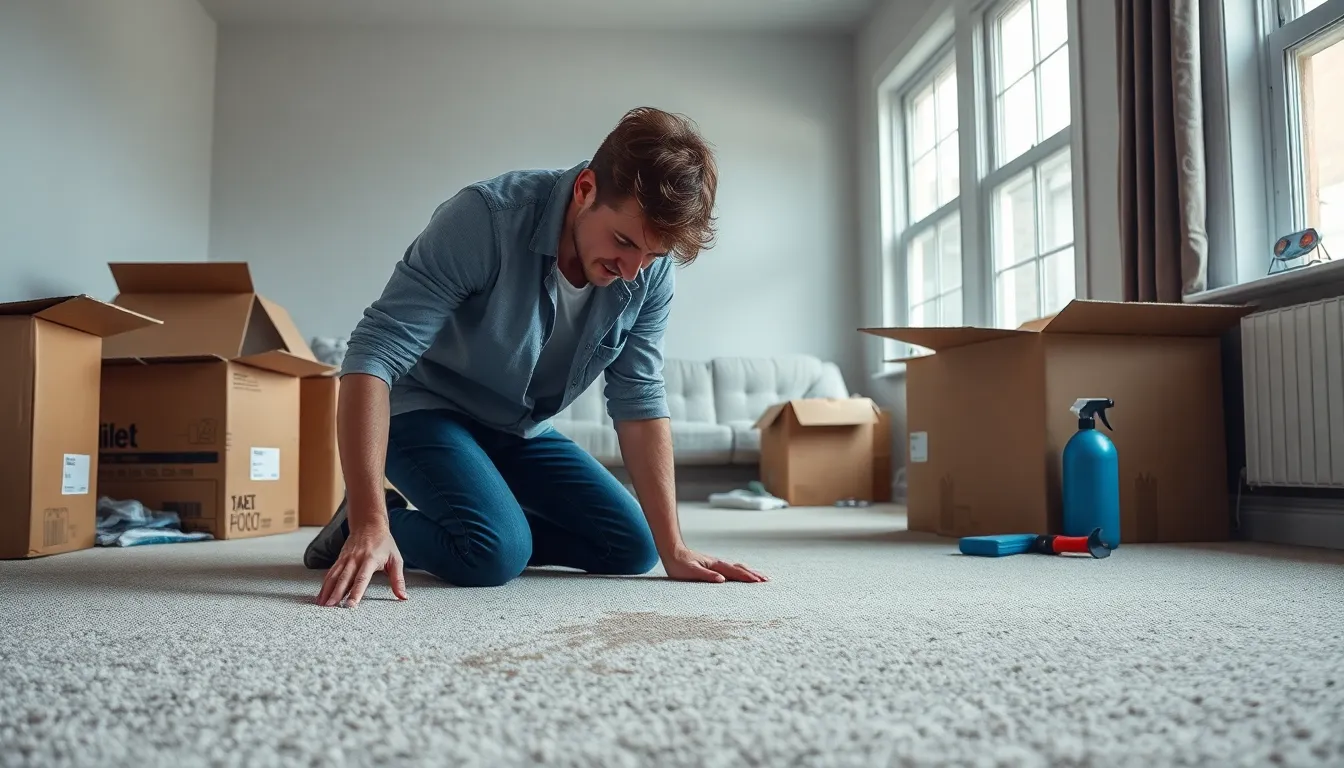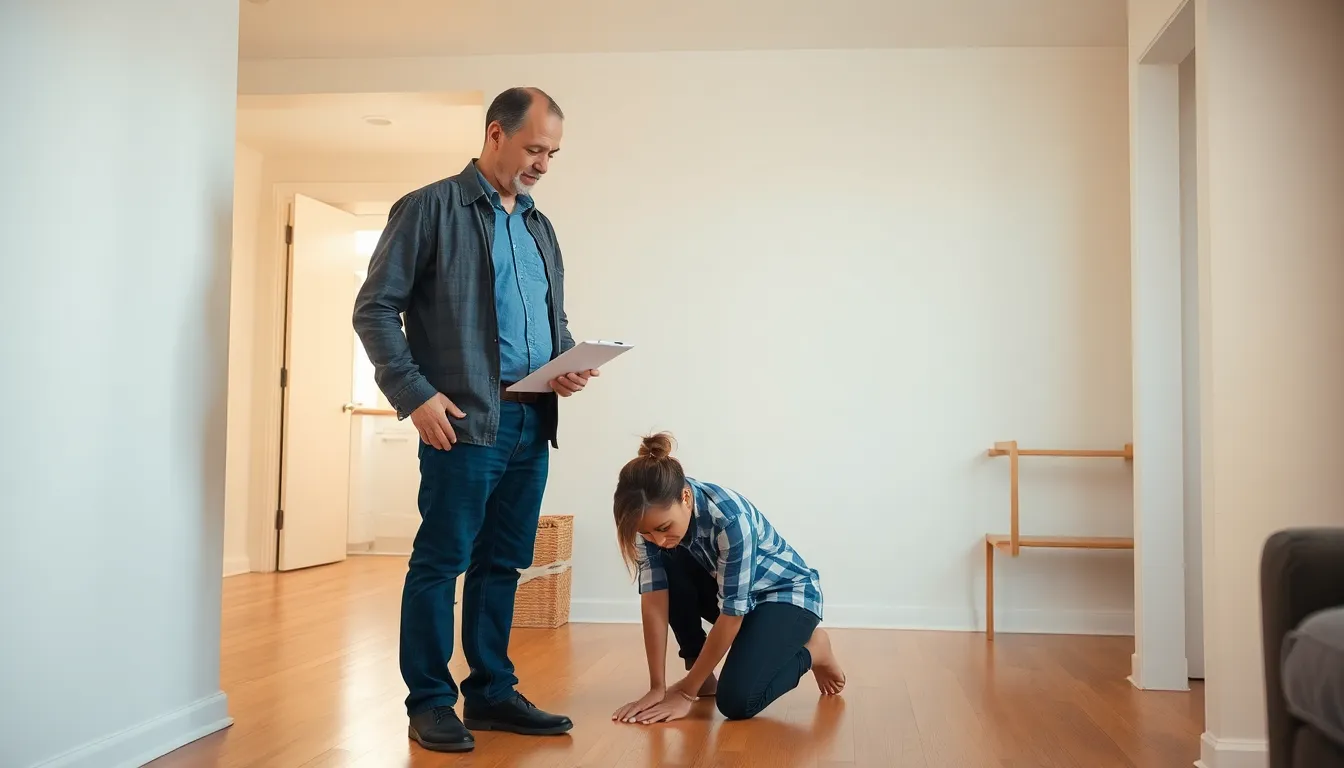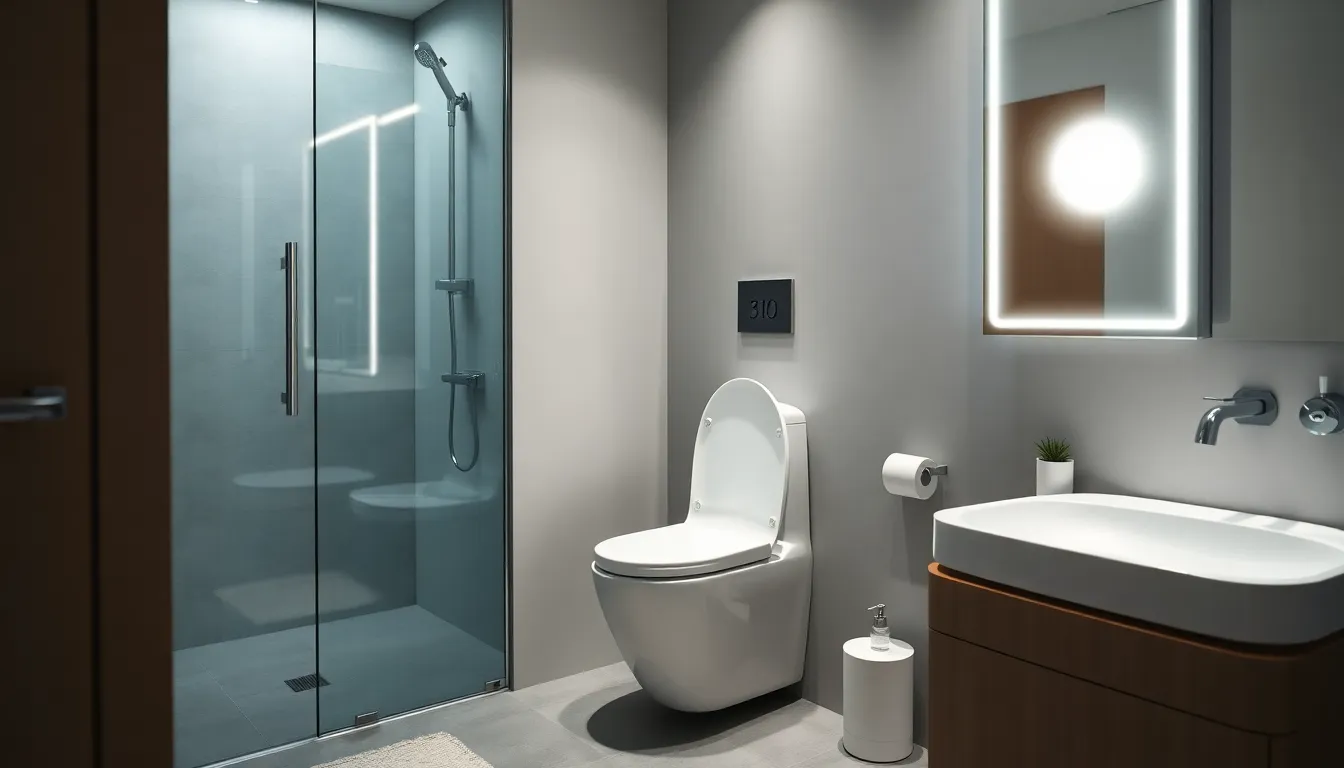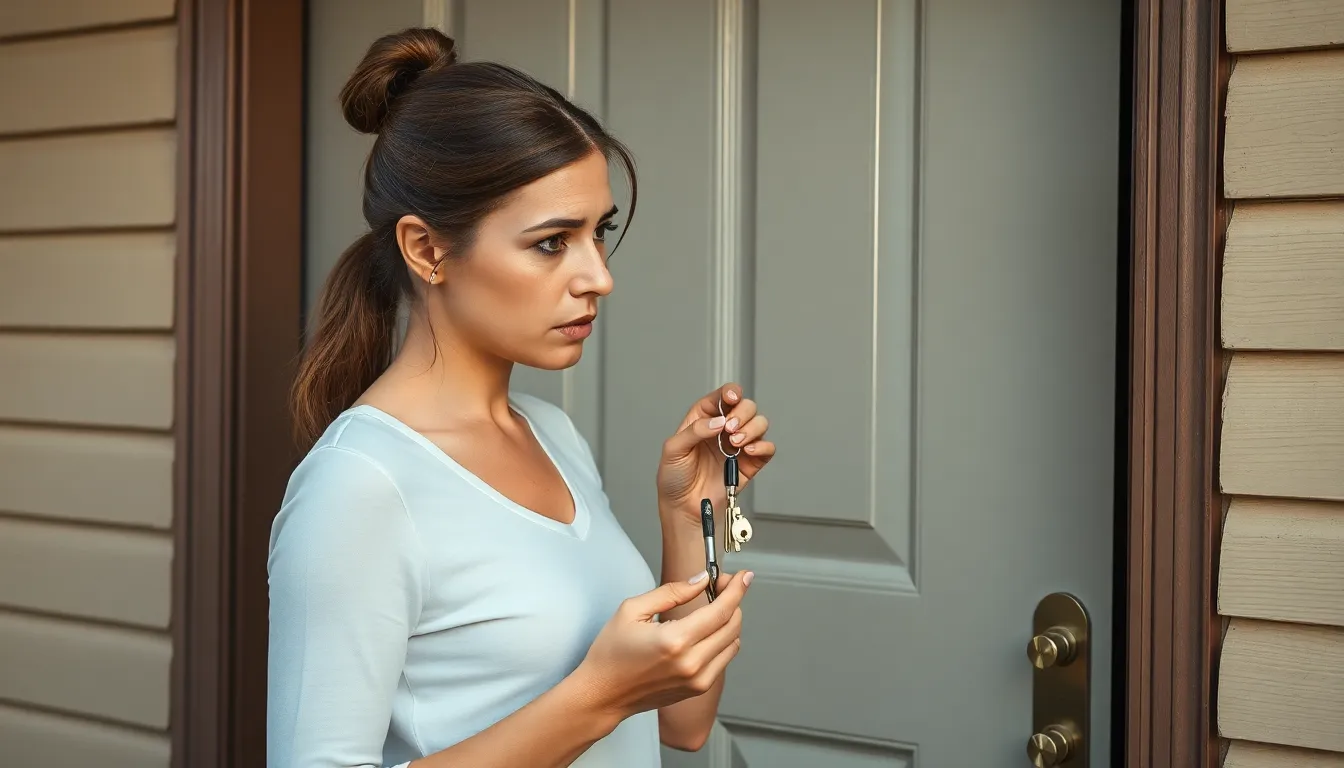Table of Contents
ToggleMoving out can feel like a scene from a chaotic comedy—boxes everywhere, furniture in awkward positions, and that one rogue sock that refuses to be found. Amidst the whirlwind, one crucial task often gets overlooked: the move-out inspection. This isn’t just a formality; it’s the final act in your rental saga that can save or cost you a pretty penny.
Overview of Move-Out Inspection
A move-out inspection serves as a formal evaluation of a rental property before the tenant vacates. This process typically occurs within the last few days of occupancy. Property owners or managers conduct this inspection to assess the condition of the unit. They identify any damages that go beyond normal wear and tear to determine potential deductions from the security deposit.
Tenants should schedule the inspection in advance. By doing so, they allow time for repair tasks that may be necessary. Documenting the property’s condition through photographs can help clarify any disputes concerning damages. Most landlords expect tenants to leave the property clean and well-maintained.
The inspection report should include detailed notes about any issues. It is critical to address problems like stains on carpets, scratches on floors, or chipped paint. Each item can significantly affect the final security deposit return.
Understanding local laws regarding security deposits aids both landlords and tenants in navigating the inspection process. For example, some jurisdictions mandate specific timelines for returning security deposits after the inspection. Knowing these regulations empowers tenants to advocate for their rights effectively.
Be proactive in communicating with property managers during the inspection. Clarifying any potential concerns allows both parties to reach an agreement. When all parties remain transparent, the process runs more smoothly.
To optimize the move-out inspection experience, consider completing necessary repairs prior to the inspection date. A well-prepared tenant can contribute significantly to a positive outcome. By investing time in the state of the apartment, financial rewards may follow.
Importance of Move-Out Inspection
A move-out inspection plays a vital role in the rental process, influencing both tenants and landlords. This formal evaluation directly impacts financial outcomes and property conditions.
Protecting Tenant Security Deposits
Conducting a thorough move-out inspection helps tenants recover their security deposits. A documented inspection identifies damages beyond normal wear and tear, preventing unjust deductions. Notably, tenants should take photographs of the property before moving out. These images serve as evidence of the property’s condition, which can be crucial in disputes. Landlords often rely on detailed inspection reports to assess the situation fairly. Understanding state laws surrounding security deposits enhances tenants’ ability to claim their funds. An early inspection allows time for necessary repairs, maximizing chances of getting the full deposit back.
Ensuring Property Condition
Move-out inspections ensure the rental property’s condition meets expectations. Assessing the unit allows landlords to address any maintenance issues promptly. Observations during the inspection can uncover hidden problems, such as leaks or structural concerns. Tenants benefit from this process, as it provides an opportunity to rectify minor damages before vacating. Clear communication during the inspection aids in setting mutual expectations regarding property standards. Satisfying both parties leads to a smoother transition for future tenants. Following through with repairs enhances property value and preserves the landlord’s investment.
Steps Involved in Move-Out Inspection
Move-out inspections involve several essential steps that help ensure a smooth transition for both tenants and landlords. Each phase is crucial for assessing the rental property’s condition and preparing for the return of the security deposit.
Pre-Inspection Preparation
Before the official inspection, tenants should take specific steps to prepare the property. Cleaning the entire space significantly enhances the chances of a favorable evaluation. Repairing minor damages, like filling nail holes and replacing burnt-out lightbulbs, prevents potential deduction from the security deposit. Gathering all relevant documents, such as the lease agreement and previous inspection reports, aids in addressing any discrepancies. Scheduling the inspection with enough notice allows time for repairs and discussions with the landlord or property manager.
Conducting the Inspection
During the inspection, landlords or property managers assess all areas of the rental unit systematically. Starting from one room and moving through the rest ensures thoroughness. Inspectors check for damages, cleanliness, and adherence to lease terms. Specific attention is given to appliances, plumbing fixtures, carpets, walls, and flooring. Tenants should be present to address questions and raise concerns about possible charges. Engaging in open dialogue helps clarify expectations and responsibilities.
Documenting Findings
After the inspection, documenting findings is key to avoiding disputes later. Creating a detailed report that includes photographs of any issues offers tangible evidence of the property’s condition. Identifying damages directly impacts the security deposit return process. The report should outline problems such as stains, scratches, or excessive wear and tear. Tenants can use this documented information to contest any unfair deductions. Sharing the report with the landlord promotes transparency and fosters a mutual understanding of responsibilities.
Common Issues Found During Move-Out Inspections
Move-out inspections often reveal several common issues that can impact the return of a security deposit. Damage to walls frequently stands out, including scuffs, holes, or chips resulting from furniture relocation. Carpet stains represent another prevalent concern, particularly in high-traffic areas where spills or dirt accumulation occurs.
Floor scratches are equally problematic, especially on hardwood or laminate surfaces. Maintenance personnel regularly note these scratches during evaluations, which can lead to repair costs.
Appliances not cleaned adequately often draw attention as well. For example, ovens filled with grime or refrigerators containing leftover food can result in withheld deposits.
Windows and screens serve as crucial inspection points. Dirty windows or damaged screens can signal neglect, prompting landlords to charge for cleaning or replacements.
Light fixtures may expose another common issue. Burned-out bulbs or broken fixtures often require replacement, leading to further deductions from the security deposit.
Plumbing issues sometimes arise during inspections. Leaks or signs of water damage around sinks or tubs can raise flags, necessitating repairs before tenants vacate.
Additionally, yard maintenance frequently becomes an inspection topic. Overgrown lawns or unkempt gardens may incur fees, as landlords expect properties to be returned in reasonable condition.
Tenants should anticipate these issues and address them prior to their move-out inspection. Understanding these common concerns facilitates proactive measures that enhance the likelihood of recovering the full security deposit.
Best Practices for Tenants and Landlords
Tenants and landlords benefit from following best practices during move-out inspections. Conducting pre-inspection preparations is vital for tenants. Cleaning the property and repairing minor damages creates a favorable impression. Gathering relevant documents helps ensure all parties understand expectations.
Communication plays an essential role in the inspection process. Engaging in open dialogue with landlords or property managers provides clarity. Tenants can ask questions about specific concerns, while landlords can explain their assessment criteria. Understanding each party’s expectations fosters collaboration and reduces the risk of disputes.
Documentation during the inspection is critical. Taking photographs of the property’s condition helps tenants establish evidence for disputes. Providing a detailed report of findings keeps both parties accountable. Clear documentation aids in addressing any potential security deposit deductions.
Familiarizing oneself with local regulations regarding security deposits ensures compliance. Knowledge of timelines for returning deposits is crucial for both tenants and landlords. State laws may dictate the process, so understanding these can prevent conflicts.
Anticipating common issues during the inspection enhances outcomes. Damage to walls and carpet stains frequently arise as concerns. Addressing these common problems before the inspection increases the likelihood of recovering the full security deposit. By prioritizing cleanliness and necessary repairs, tenants can secure their finances.
Landlords also benefit from proactive inspections. Identifying maintenance issues early aids in preparing the rental for new tenants. Ensuring the property is in good condition enhances its value and marketability. By conducting thorough inspections, landlords maintain their investments and confirm tenant satisfaction.
Conclusion
The move-out inspection is a pivotal moment in the rental process that shouldn’t be underestimated. By taking the time to prepare and understand the inspection’s significance, tenants can safeguard their security deposits and ensure a smooth transition. Engaging in open communication with landlords and documenting the property’s condition can prevent misunderstandings and disputes.
Both tenants and landlords benefit from a thorough inspection process. It not only helps tenants recover their deposits but also allows landlords to maintain their properties effectively. Ultimately, a proactive approach to move-out inspections leads to positive outcomes for everyone involved, enhancing satisfaction and preserving property value.








